This is the first of a series of posts in which we’ll look at different techniques of developing interactive stories. In this first post, we’ll explore techniques to help you start to produce stories and look at ways to prepare them for working with digital tools to make them more interactive such as Scratch and Twine.
Think of a character in a book that you have read that you really enjoyed, did you ever want to be that character? Did you wish you could put yourself in their world, to experience the issues they face and problems they have to overcome in the story?
The goal of all storytelling is to immerse the listener, reader or viewer in a story. The goal of games is to immerse the player to become an active participant in the story and telling stories is central to that goal even if a game appears not to have a story, the setting, the scene, the objectives or challenges that the player may face always follow a path towards some sort of goal.
My journey towards being involved in telling stories started one weekend in my early teens when I went to my auntie’s house, that my uncle, who could see that I was a little bit bored, gave me a copy of a book to read that sparked my interest in storytelling. It was called Warlock of Firetop Mountain, by Steve Jackson and Iain Livingstone, which is now seen a classic of interactive fiction. It was a “choose your own adventure” style book in which the reader was drawn in to a fanstasy world similar to games like Dungeons and Dragons or Warhammer, but where you chose your path through the story by selecting choices on each page such as “do you fight the monster? turn to page 56. Or do you hide behind a rock, turn to page 45? I was gripped for the whole weekend and never put the book down. Did I complete it? I can’t remember but that wasn’t the point, I was immersed in the story and despite there being limited imagery in the book, in my mind I could fill in the blanks.
Now, at the beginning of the 21st century, we have so many tools at our disposal to create interactive stories but if you want to create your own, a good place to start is to learn Scratch.
Scratch is well known for its ability to encourage children and adults alike to develop skills in programming. There are countless games and interactive projects on the Scratch website to help inspire you to get started and it allows for easy remixing of other people’s creations and taking sections of code to use in your own projects. But it is also a very effective engine for developing storytelling in an expressive and creative way. The scratch interface encourages exploration and allows you to take a tinkering approach to problem-solving and this can work well for storytelling or narrative development.
It is relatively simple to create different backgrounds to change scenes and to animate those scenes to see the story unfold but it is also a very good system for introducing participation in the story. In this post we will explore some of the techniques for experimenting with storytelling to explore ways of developing that story interactively.
An alternative tool is Twine. Twine is an open-source tool for telling, non-linear, interactive stories. It creates interactive stories and allows you to learn web coding skills by using HTML and CSS while creating text-driven interactive narratives.
There are different reasons for using either tool and our advice is to learn to use both as they are both excellent systems to use, but choosing which one to use for your project depends on your goal. If you intend to learn animation and would prefer to use drag and drop approach to programming, we would suggest you use scratch, but if your goal is to learn some HTML and CSS, whilst developing a text driven narrative with images, perhaps Twine would be a more useful tool.
Getting started with creative writing
This is perhaps the most daunting aspect of the process. What do I write? While there are no simple paths to creating the next best selling novel, there are some simple techniques to starting to write.
The first is to overcome the barrier of putting words on the page. If you think like an artist for a moment, an artist doesn’t put pencil to paper and immediately create a masterpiece. It has to be developed and refined over many steps, introducing different processes and techniques until a final piece has been developed. The same is true of creative writing. As long as words are being written on a page, some of those words will be good and can be kept and some that don’t flow so well can be discarded. So using techniques to encourage you to write words on a page such as word association or train of consciousness exercises can help you to write words. Once you have written a few pages, you will find that some of the sentences are actually quite good. If you are using a word processor, you can cut and paste the good sentences into a new document and build up useful written paragraphs.
Another way to develop written passages is to play games such as a variation of “Exquisite Corpse” which was a “stream of consciousness” game developed by surrealists such as Andre Breton, Man Ray, Marcel Duchamps and Jean Miro. First you fold a piece of A4 paper into a fan shape of around 6 to 8 folds. Its best to play this game with 3 or more people. The first person draws a scene from a well known story. Then the first player shows the next player the first drawing only. The next player reveals the next fold and writes out the story which was drawn by the first player, the next player is only shown the story written by the second player and then draws a picture of the story they have read and this continues with each player involved. In the end, when you fold out the whole piece of paper you will see how the story has become distorted over time and hopefully, quite surreal by the end. This paragraph can become the beginning of a new story.
Another great approach is to use Rory’s Story Cubes.
You use a set of story cubes which are like dice with pictures or symbols of different character and plot events. As you roll the dice, you pick up one cube at a time and on the spot, you tell an aspect of a story which relates to the picture shown on the cube. Then you pick up each one in turn and continue the story. Its a good way of helping you develop ways to improvise. Then you can either record audio of your story with a phone or film a video clip of the story unfolding. Then you can write it up later.
Below is an official clip of the story cubes in action.
There are lots of different ways to generate ideas for writing, the important thing is to use a method that works for you. Sometimes all you need is to go on a long walk and you will find that ideas start to flow. Alternatively, try the following link for other ideas generation approaches. Brainstorming strategies for generating new writing ideas
Developing characters
A story is made when characters and worlds collide. But characters must be developed to bring them to life. Characters which haven’t been developed or who are walking cliches don’t allow the reader to become involved in the character. So you need to find ways to develop your main character and all other characters that they meet.
You can use character development worksheets to build up your character, choose from sample character traits,
Adding conflict, creating tension
A story needs conflict. If nothing happens to the main character in your story, why would anyone want to continue reading your story? So from the outset, you need to find ways to introduce characters to different conflicts. How your characters react to different conflicts will determine how believable your characters are. You can try to put your character in situations, to see how they react. How they react will help you decide what their values and beliefs are, otherwise known as their traits.
There are some good ways to develop conflict. One is to develop characters with conflicting traits such as an aggressive person vs someone who avoids conflict or people on opposing sides of a wider conflict or perhaps conflict could arise from a move to a different social or financial status.
Plot development: The three act structure and story arcs
Once you have developed a character and some conflict you can start to build a structure to your story. There are different structures for story development such as “The hero’s journey” and the “seven act structure” but the three act structure is most common. Luckily, it begins with Conflict. Conflict as we have already discovered puts something in the way of the character that they need to deal with. The act of them overcoming this obstacle or point of conflict is the second part of the three-act structure: Action. The final part is Resolution in which the main character either wins or loses.
At this stage, deciding how the character will face and deal with (or not deal with) the three acts – Conflict + Action + Resolution is hard. Some writers say it is easier to work backwards from the ending, but it is ok to use an existing structure at this stage from one of the 7 story types or 7 basic plots – 7 Basic Plots. Your three act structure can be adapted as you get more involved in character development and plot development will become more realised as you progress through the next few stages.
You can start this process by looking at story arcs. Story arcs are graphs that plot how the three act structure raises or lowers the tension over time. You can’t have a story that is high tension continuously but how you design your story arc to either raise or lower the tension will help to keep your readers gripped as the story progresses.
Story arcs are personal to your own story and consider adapting a standard model to your needs.

Developing plot further
Once you have a story arc you can start to use different approaches to build on your plot and develop your story and move towards a more developed 3 act structure. An approach we like to take for developing stories for games is to use the CSI or crime scene investigation approach to plot development.
Imagine you have a pin board with which you place your main character (the protagonist) at the centre. You can put up placeholder images for other characters at this point but to give it a real CSI feel, you could develop photofit pictures of the protagonist and the opposing character (the antagonist) and start with a few plot elements or props. This then becomes the creative scene of the crime which you can develop bit by bit as you come up with ideas. For example, in your plot if you had the idea that someone needed to pick the lock of a safe, all you need to do is find a picture to represent the safe and pin it on the pin board and connect it to your character or another plot line with some string and drawing pins. Alternatively you can use a tool online to do this like Padlet
The finer points and ways of storytelling are outside the scope of this post but if you want to delve deeper, you can start with this great course at Kahn Academy, delivered by Pixar, called The Art of Storytelling
Storyboarding or Storycards?
How important are storyboard for game storytelling. Its helpful to visualise in some detail the development of your story but its sometimes more helpful to storyboard interactions such as how a character responds to control mechanics such as Jump or Opening a door or picking up items. Its difficult to visualise a game story for a point and click adventure game but even more so for a narrative driven first or third person game.
One approach is to use story cards which is a good first step to storyboarding a game story. For this you need to get a set of blank postcards to write on. On each card you can start to write a few short sentences about an event that happens in the story and build up your cards into important events which can become primary events and events of lesser importance can become secondary events. Once you have a range of primary events and secondary events you can even develop cards for secrets or easter egg events that can be found if restricted aspects of the story are unlocked.

Story Cards used for “The Last of Us” V&A Exhibition – Videogames:Design/Play/Disrupt
At this point you can organise your cards on a pin board and if you need to change the order you can at any point. Once you have done this you can start to add in images that represent these sentences as scenes or sketch some visuals to start to turn the storycards into a more developed story board. More information on storyboarding and storycards can be found here.
Game story structures: Non-linear storytelling – Parallel/Branching and Open World
Games follow different narrative structures which are similar to those used in film but because they are interactive and immersive with the player at the centre of the story, need to allow for a structure that is non-linear. Games can follow a linear structure in that it progresses from beginning to end but to develop choice within the game you might want to think about an alternative structure.
Parallel Narrative
As you can see below a parallel structure starts with a linear point in a story but choice is introduced all the way through the story, allowing the protagonist to choose different paths, but you are always brought back to the main linear path of the story

Branching Narrative
In a branching narrative the protagonist is given a choice of paths but they are not usually brought back to the main linear path of the story. In doing so the story will end up with a series of alternative endings.
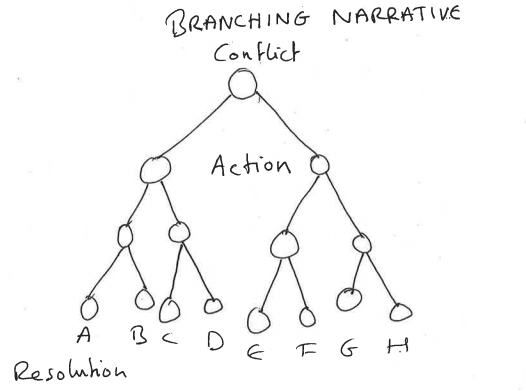
Open-world Narrative
In an open world narrative structure, the protagonist doesn’t have any linear path at all and can choose any aspect of the plot in any order at any time. In this structure, the story needs to be devised to work in a way that it can be discovered in any order. This is a very good model to explore more experimental approaches to storytelling through in-game assets, discussions between protagonists and other non player characters or even emergent storytelling where the game itself rewrites the story depending on the chosen actions of the protagonist.

This post is designed to give you a way in to start to develop stories for games but you can also just start tinkering with software such as Scratch or Twine and develop a story through your experiments. In the next post we will explore ways of using Scratch to develop storytelling for games.



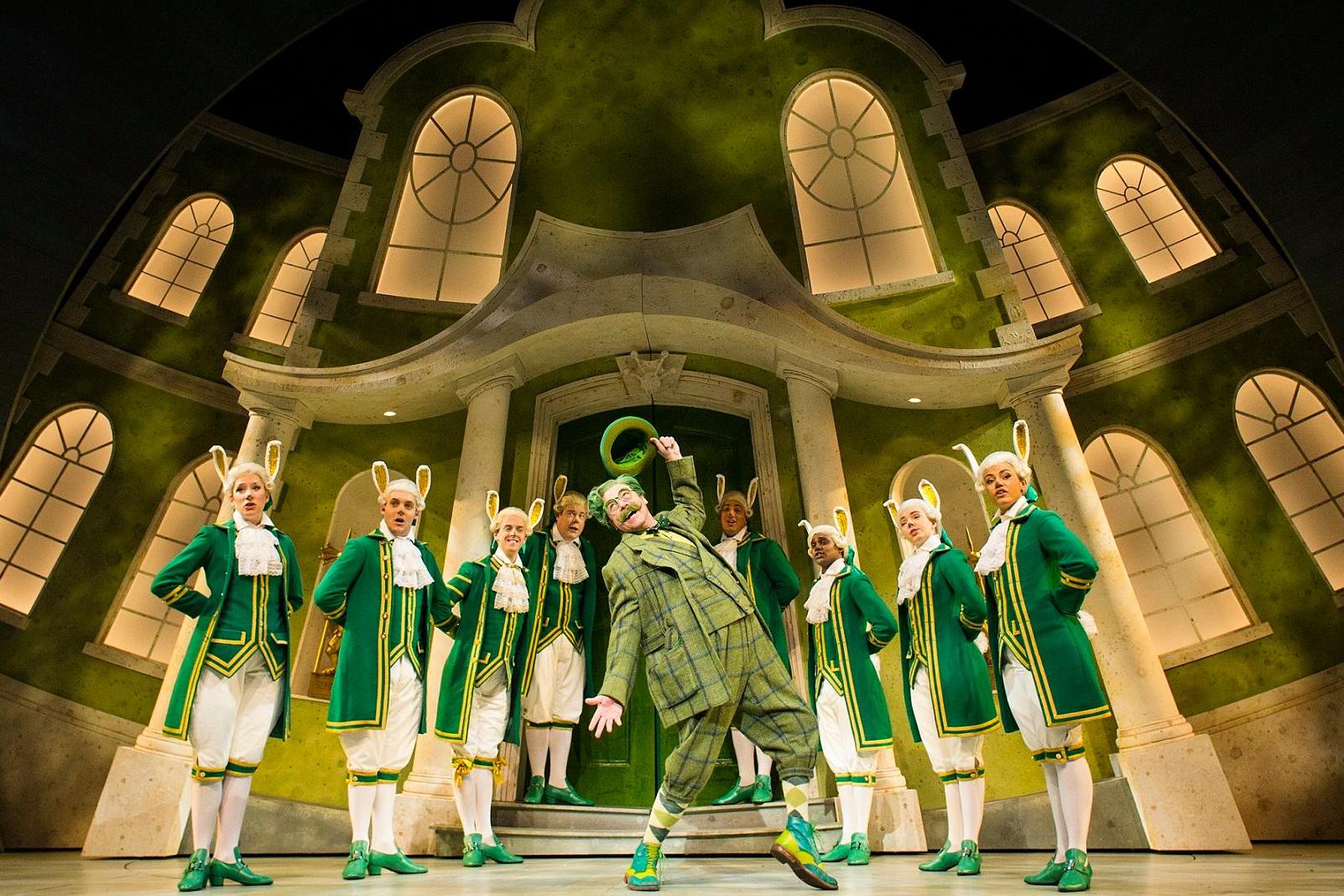

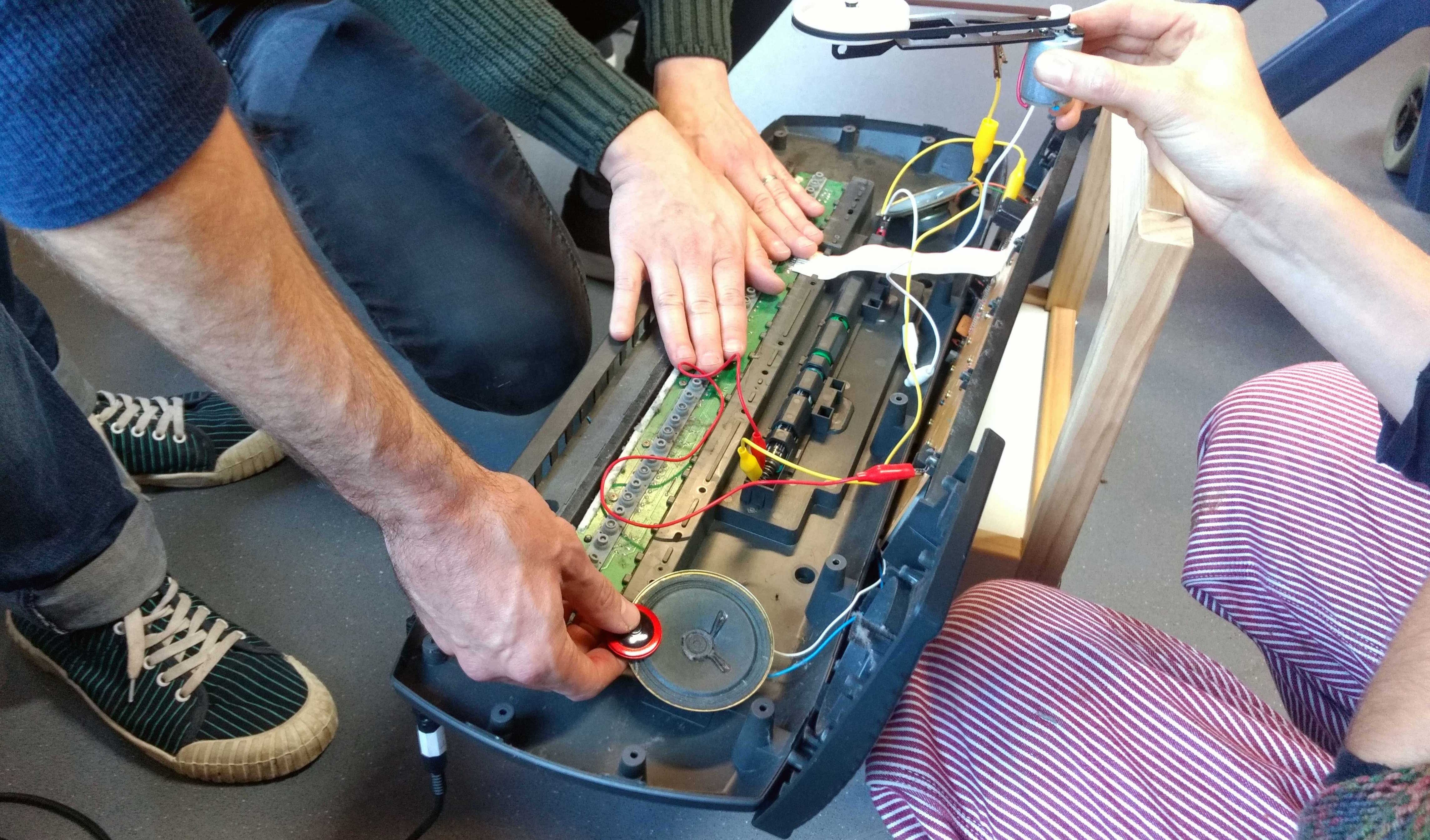
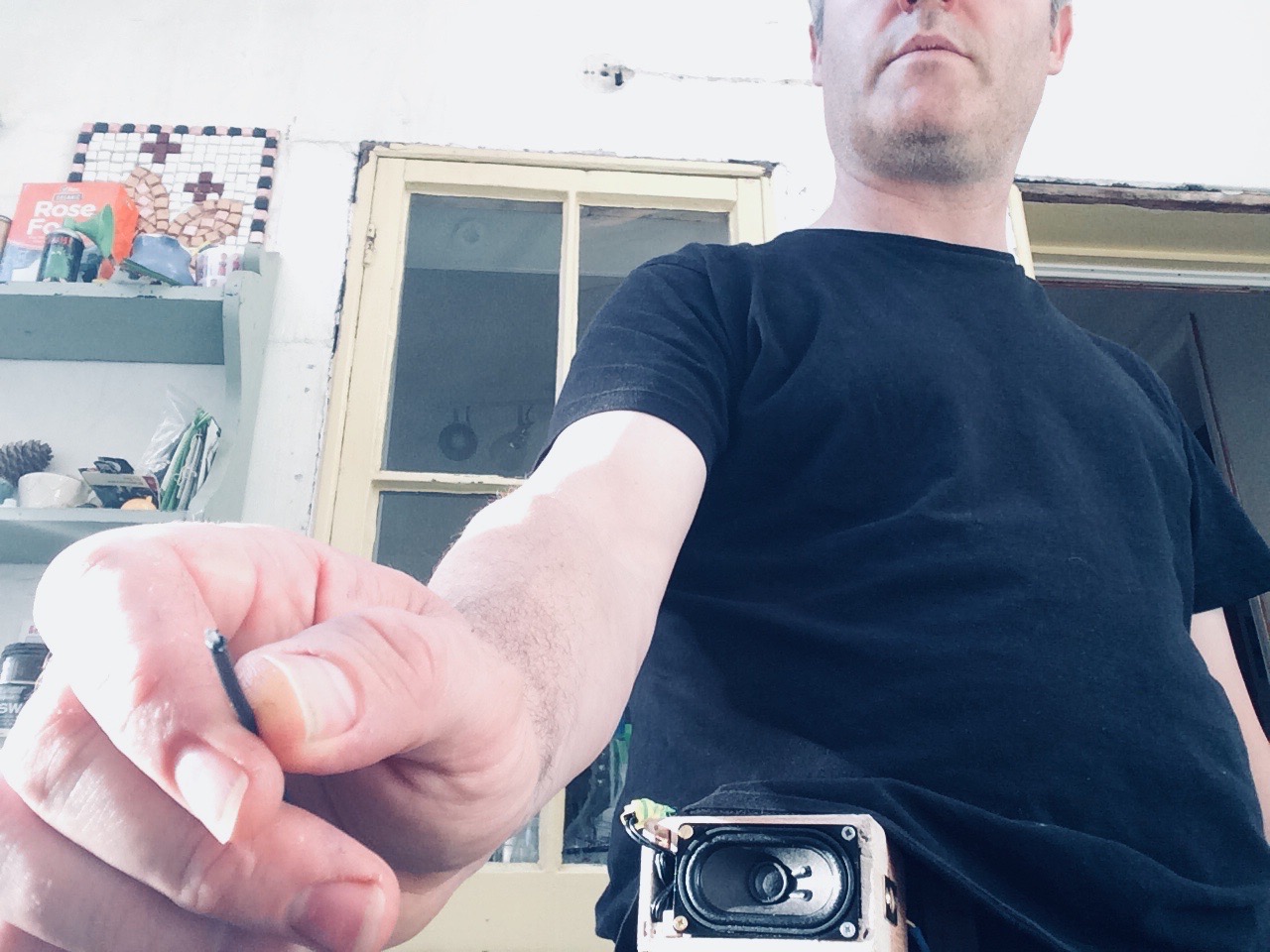
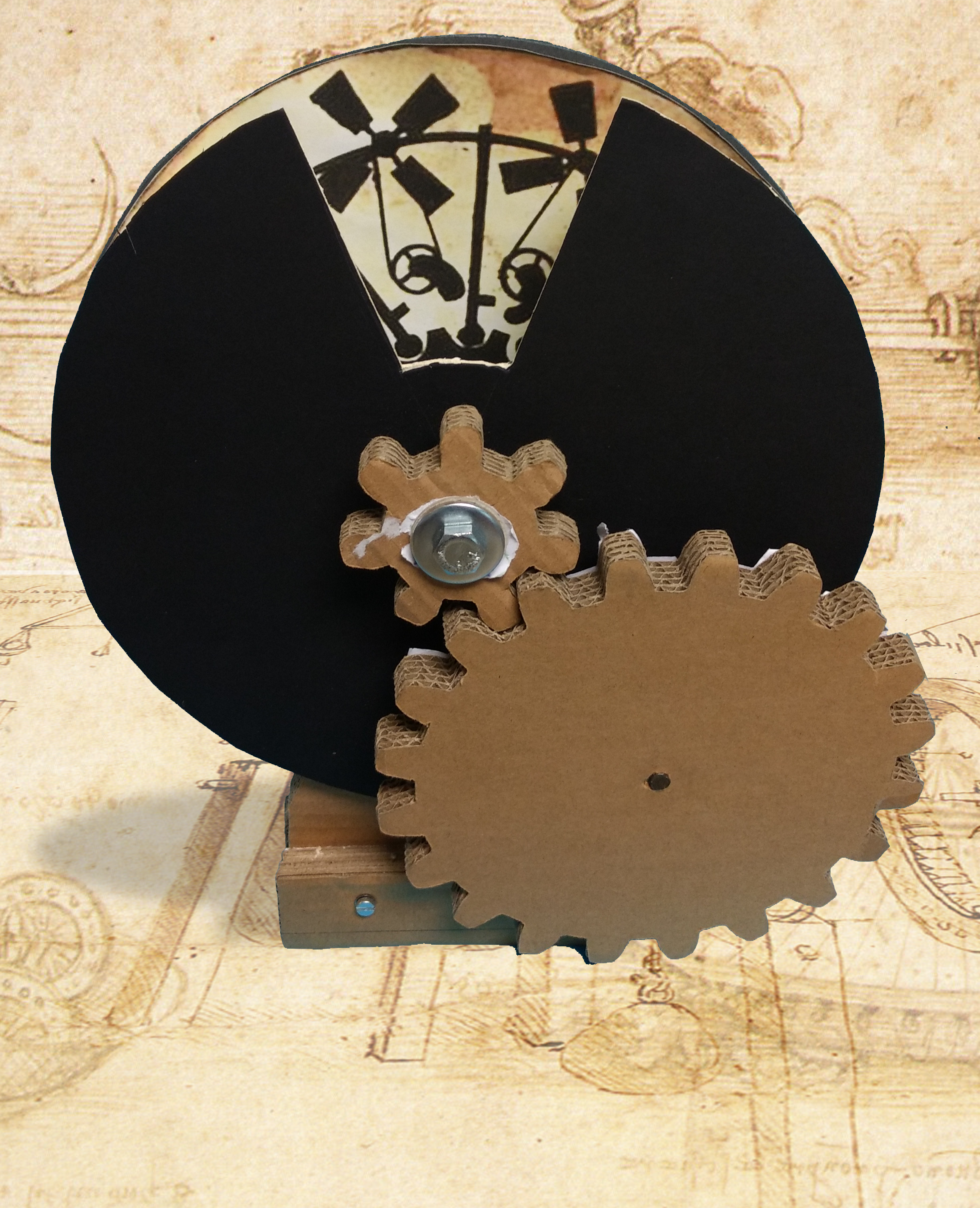

Leave A Comment
You must be logged in to post a comment.